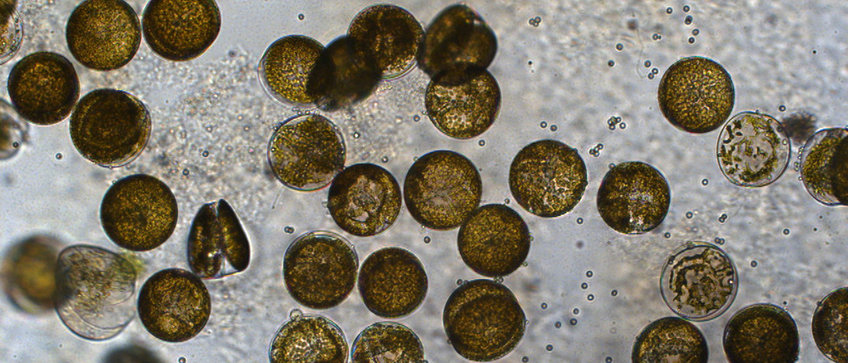
Publications of Francisco Rubén Badenes-Pérez
All genres
Journal Article (12)
2023
Journal Article
Plant glucosinolate content and host-plant preference and suitability in the small white butterfly (Lepidoptera: Pieridae) and comparison with another specialist Lepidopteran. Plants 12 (11), 2148 (2023)
Journal Article
Intraspecific and interstage similarities in host-plant preference in the diamondback moth (Lepidoptera: Plutellidae). Horticulturae 9 (1), 39 (2023)
2020
Journal Article
Plant glucosinolate content increases susceptibility to diamondback moth (Lepidoptera: Plutellidae) regardless of its diet. Journal of Pest Science 93 (1), pp. 491 - 506 (2020)
2014
Journal Article
Insect attraction versus plant defense: young leaves high in glucosinolates stimulate oviposition by a specialist herbivore despite poor larval survival due to high saponin content. PLoS One 9 (4), e95766 (2014)
Journal Article
Using plant chemistry and insect preference to study the potential of Barbarea (Brassicaceae) as a dead-end trap crop for diamondback moth (Lepidoptera: Plutellidae). Phytochemistry 98, pp. 137 - 144 (2014)
2013
Journal Article
Interaction of glucosinolate content of Arabidopsis thaliana mutant lines and feeding and oviposition by generalist and specialist lepidopterans. Phytochemistry 86, pp. 36 - 43 (2013)
2012
Journal Article
Plant-mediated facilitation between a leaf-feeding and a phloem-feeding insect in a brassicaceous plant: from insect performance to gene transcription. Functional Ecology 26, pp. 156 - 166 (2012)
2011
Journal Article
A host-plant specialist, Helicoverpa assulta, is more tolerant to capsaicin from Capsicum annuum than other noctuid species. Journal of Insect Physiology 57 (9), pp. 1212 - 1219 (2011)
Journal Article
Metabolic detoxification of capsaicin by UDP-glycosyltransferase in three Helicoverpa species. Archives of Insect Biochemistry and Physiology 78 (2), pp. 104 - 118 (2011)
Journal Article
Phylloplane location of glucosinolates in Barbarea spp. (Brassicaceae) and misleading assessment of host suitability by a specialist herbivore. New Phytologist 189 (2), pp. 549 - 556 (2011)
2010
Journal Article
Can sulfur fertilisation improve the effectiveness of trap crops for diamondback moth, Plutella xylostella (L.) (Lepidoptera: Plutellidae)? Pest Management Science 66 (8), pp. 832 - 838 (2010)
2008
Journal Article
Biology, herbivory, and host specificity of Antiblemma leucocyma (Lepidoptera: Noctuidae) on Miconia calvescens DC. (Melastomataceae) in Brazil. Biocontrol Science and Technology 18 (2), pp. 183 - 192 (2008)
Book Chapter (1)
2008
Book Chapter
Biological control of Miconia calvescens with a suite of insect herbivores from Costa Rica and Brazil. In: XII International Symposium on Biological Control of Weeds, pp. 129 - 132 (Eds. Julien, M. H.; Sforza, R.; Bon, M. C.). CAB International, Wallingford [u.a.] (2008)
Conference Paper (1)
2011
Conference Paper
Importance of glucosinolates in determining diamondback moth preference and host range. In: Proceedings of the 6th International workshop on management of diamondback moth and other crucifer insect pests, pp. 63 - 66. 6th International workshop on management of diamondback moth and other crucifer insect pests , Nakhon Pathom, Thailand, March 21, 2011 - March 25, 2011. (2011)